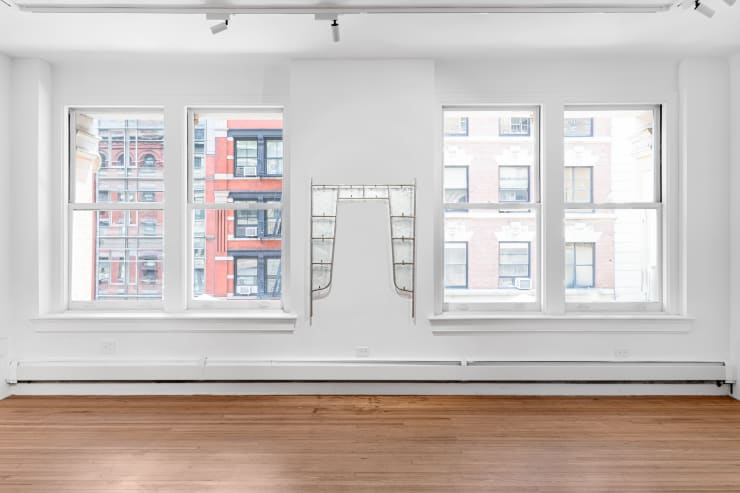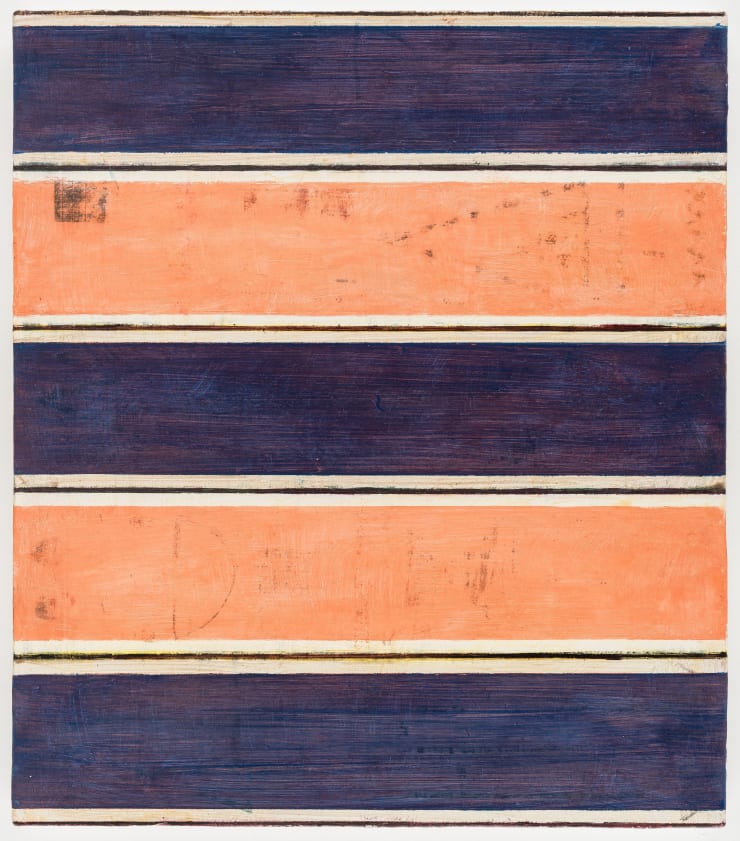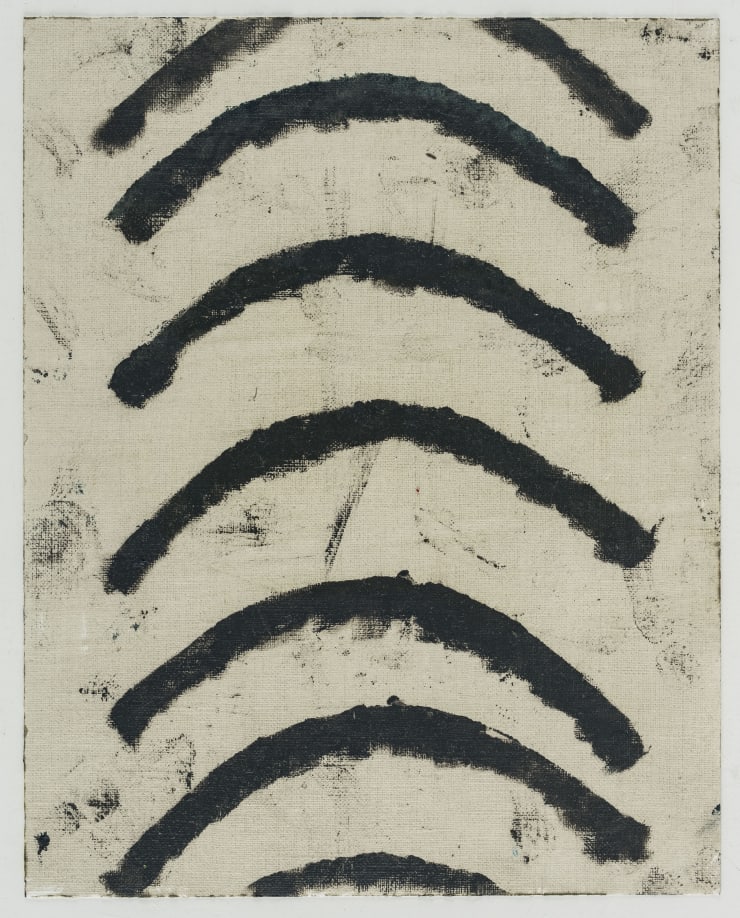Strata: New York, New York | Featuring Mariona Berenguer, Pius Fox, Frank Gerritz, and Andreia Santana
Pablo’s Birthday examines the abstraction of labor across various artists' practices and a range of mediums in Strata, a conversation between Mariona Berenguer, Pius Fox, Frank Gerritz, and Andreia Santana. The artists engage laborious and intense processes and/or dissect them. Ultimately, the work comments on a hidden labor, a minimal presentation with a substantial, complex, and lengthy process. What is layered into a piece may not be seen in its result.
Mariona Berenguer transfers labor from one form into another. Frank Gerritz highlights the minimalist tradition of intricate and complex processes within his practice. Andreia Santana conceptualizes meanings of labor and its relationship to humans into steel and glass sculpture. Pius Fox’s practice itself is heavily laborious; one that leaves traces of the artist's effort onto the final composition. Together the practices engage the epitome of line, form, structure, and corporeal physicality as it translates the intersection of abstraction and minimalist approaches.
Berenguer’s Overalls series are odes to industrial labor and the workers’ bodies involved therein. As both a uniform and personal protection, the garments intake energy, labor, and time invested in physical work. To make visible the material and mnemonic traces of these efforts, Berenguer unraveled a series of used worker overalls, donated by artists and other professions, into individual strips of fabric and re-weaved them into wall tapestries. Bound in steel, the flat wall formations may seem simplistic, playing into the legacies of minimalism with sparse dimension and isolated color palettes. Yet, each work is embedded with the physical labor ingrained within their original stitchings devised from both Berenguer’s physicality of the practice and the workers' labor melded into the fabrics from years of work.
Santana’s observations of scaffolding structures in New York City dissect a complex history and relationship between humans and their physical environment. A scaffold—used primarily for construction and safety— is a simultaneously permanent and temporary configuration that passively and actively changes the lives of those in its presence. Santana’s shrunken versions of these megastructures are embedded with objects found nearby their actual counterparts; speaking directly to the human presence in their element. A metal frame is the result of a physically laborious artistic practice and a condensed representation of a complex phenomenon that permeates the lives of labor workers, citizens, and their worldly surroundings.
In line with minimalist tradition, Gerritz conveys a rigorous and precise geometrical language wherein each work relates to one another and leads to the next. The refraction and reflection of light against the graphite, paint stick, or aluminum engages the surrounding space; one imagines the work continually evolving as the space’s light evolves, but equally as a viewer moves. Simplistic in result and at first glance, and seemingly straightforward in process, Gerritz plays with the foundational concepts of minimalism that require intense laborious processes, engaging a perfectionist quality by meticulously layering, painting, and sketching the material.
Fox’s abstractions reflect the physical element process. The layering of paint and color play an important role in the artist’s work. Fox scrapes away at the surface, both revealing and hiding layers upon layers of paint. The compositions require intense physical effort in the forms of pressure, movement, and intention. The final object provides visual evidence of Fox’s painterly journey; simultaneously revealing and hiding the processes of labor that go undetected at first sight.
From emulations of scaffolding structures and the weaving of workers’ physical history, to the meticulous traditions within minimalism and the evidence of labor in an artistic process, Strata explores processes of abstraction within various procedures and materialities. Speaking to a minimalist legacy, the works presented in Strata stitch, scrape, sketch, and build intricate concepts into straightforward compositions and aesthetics– hiding a strata of meaning beneath a simple surface.
-
 Mariona BerenguerOverall 16 (Aktion/Jane), 2023Overalls, cotton thread and stainless steel15 3/4 x 12 5/8 x 1 in
Mariona BerenguerOverall 16 (Aktion/Jane), 2023Overalls, cotton thread and stainless steel15 3/4 x 12 5/8 x 1 in
40 x 32 x 2.5 cm -
 Mariona BerenguerOverall 15 (Kurt), 2023Overalls, cotton thread and stainless steel47 5/8 x 19 1/4 x 1 in
Mariona BerenguerOverall 15 (Kurt), 2023Overalls, cotton thread and stainless steel47 5/8 x 19 1/4 x 1 in
121 x 49 x 2.5 cm -
 Mariona BerenguerOverall 8 (Blue/Silver), 2023Overalls, cotton thread and galvanized steel27 1/2 x 19 1/4 x 1 in
Mariona BerenguerOverall 8 (Blue/Silver), 2023Overalls, cotton thread and galvanized steel27 1/2 x 19 1/4 x 1 in
70 x 49 x 2.5 cm -
 Mariona BerenguerOverall 9 (Stefan), 2023Overalls, cotton thread and galvanized steel43 1/4 x 19 1/4 x 1 in
Mariona BerenguerOverall 9 (Stefan), 2023Overalls, cotton thread and galvanized steel43 1/4 x 19 1/4 x 1 in
110 x 49 x 2.5 cm -
 Frank GerritzFour Center Split Screen, 2018Pencil on mdf panel47 3/8 x 23 5/8 in
Frank GerritzFour Center Split Screen, 2018Pencil on mdf panel47 3/8 x 23 5/8 in
120.2 x 60 cm -
 Andreia SantanaRoof of Mouth #6, 2023Steel, glass130 x 98 x 26 cm
Andreia SantanaRoof of Mouth #6, 2023Steel, glass130 x 98 x 26 cm
51 x 38 x 10 in -
 Andreia SantanaRoof of Mouth #3, 2023Steel, glass135 x 96 x 18 cm
Andreia SantanaRoof of Mouth #3, 2023Steel, glass135 x 96 x 18 cm
53 x 38 x 7 in -
 Pius FoxBetween us, 2022Egg tempera and oil on canvas12 5/8 x 15 in
Pius FoxBetween us, 2022Egg tempera and oil on canvas12 5/8 x 15 in
32 x 38 cm -
 Pius FoxRiver bed, 2022Egg tempera and oil on paper on aluminum9 1/2 x 7 1/2 in
Pius FoxRiver bed, 2022Egg tempera and oil on paper on aluminum9 1/2 x 7 1/2 in
24 x 19 cm -
 Pius FoxAbendröte (Sunset in my pocket), 2022Egg tempera and oil on paper on aluminum11 x 7 7/8 in
Pius FoxAbendröte (Sunset in my pocket), 2022Egg tempera and oil on paper on aluminum11 x 7 7/8 in
28 x 20 cm -
 Pius FoxSchwingtür, 2022Egg tempera and oil on paper on aluminum11 x 7 7/8 in
Pius FoxSchwingtür, 2022Egg tempera and oil on paper on aluminum11 x 7 7/8 in
28 x 20 cm -
 Pius FoxDas wechselnde Geheimnis, 2022Egg tempera and oil on canvas15 3/4 x 11 3/4 in
Pius FoxDas wechselnde Geheimnis, 2022Egg tempera and oil on canvas15 3/4 x 11 3/4 in
40 x 30 cm














